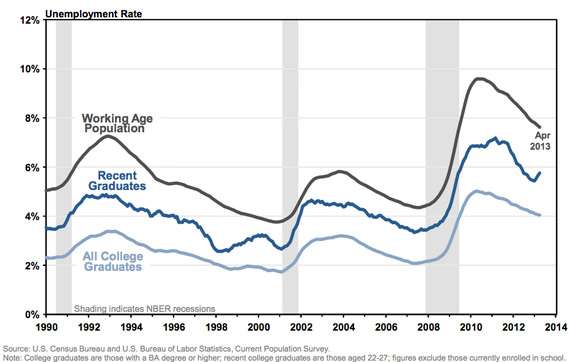Don't Sweat Student Loans!

Interest rates for new subsidized student loans are supposed to double today, from 3.4 percent to 6.8 percent, unless the government passes a fix (as they've done for a number of years). Obviously, anybody would want to pay a lower rate than a higher one, but the difference in the monthly payments for $25,000 (about the average amount that students who take loans have out upon graduation) is about $40 a month for the typical 10-year repayment cycle. (Go here for a student loan calculator).
Back in the fall of 2011, Meredith Bragg and I released "3 Reasons We Shouldn't Bail Out Student Loan Borrowers" (click to watch). Forgiving student loan debt was arguably the leading plea from Occupy Wall Street. It was a bad idea then and remains one now (for a link-rich argument, go here). The short version: These loans are voluntary, the average payment amounts are hardly overwhelming (especially when increases in lifetime earnings are factored in), and bailouts are never a good idea.
A college education is an investment - either in terms of future earnings or, as I prefer, in gaining some skills but mostly knowledge about what you'd like to do with your life. If students are attentive shoppers, they can get a great education at a low, low price. That's not being glib, either - it's the simple truth (and one I experienced), given the vast array of types of schools and programs that are available. To pretend that it's tragic or an outrage to have to pay $250 or $300 a month for 10 years for a loan that allows you to earn between $280,000 and $1 million extra over your life is not particularly convincing. Especially when the loan is being subsidized by a government that's already broke.
Interesting: Another year of 3.4 percent rates for borrowers will cost taxpayers $6 billion.
Also interesting: Discover offers private-sector student loans are pretty good rates (between 5.49 percent and 10 percent).
